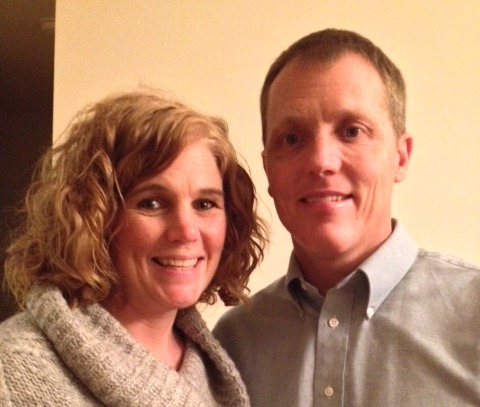Tawnya Reynolds came home from her job as a cardiac rehab nurse at Sentara Norfolk General Hospital in Norfolk, Va., and wanted to go for a run. Her husband, William, convinced her to stay home and do CrossFit with him in driveway. She agreed to—a decision that saved her life.
“We were doing our workout and towards the end, my husband said that I told him, ‘I don’t feel right’ and then I collapsed,” recalls Reynolds, who has no memory of the event, but shares William’s retelling.
William, a battalion chief with the Virginia Beach Fire Department, immediately administered CPR. The process looked so violent that the children panicked in terror.
“My kids were very scared. They thought that my husband was hurting me. I was lying in the driveway and he was over me. They were yelling for him to stop before they finally realized what was going on. He asked my daughter to grab the phone and he dialed 911,” she says.
Within 20 minutes rescue teams arrived at her residence, but her heart had already stopped.
“They tried pushing some meds into me first,” says Reynolds. “Then they hooked me up to the defibrillator. The first shock failed.”
While paramedics scrambled to get a response from her limp body, Reynolds was in a death experience.
“It was wonderful,” she remembers. “But I wasn’t ready to be there quite yet.”
Life rushed back onto her body on the second shock. They loaded her into the ambulance and rushed her Chesapeake General Hospital where she spent six days in the intensive care unit. Her doctors gave her a one percent chance of surviving the cardiac arrest with no long-term damage. To everyone’s surprise, she suffered none apart from bodily discomfort and paint.
“I was out of work for three months. It took two months for me to get back to normal. I was extremely sore from the CPR and surgery,” says Reynolds.
Today, nearly a year later, she’s fine. The incident last April came as an out-of-the-blue occurrence for Reynolds, who has no family history of heart disease and no risk factors. She was fit, ate properly and wasn’t overweight. Today, she maintains her previous healthy lifestyle, sans caffeine, which she cut out willingly. She’s also exercising.
“I have a defibrillator in my chest to shock me back to normal heart rhythm should this ever happen again,” she says. “My heart rate is set for 170 [beats per minute] and it can shock me if it goes higher, so I don’t do any real running.”
And while it didn’t take her long to pick her life back up, her husband struggled.
“He had a really hard time with it. Even thought he’s a battalion chief and trained to do this, he never expected to have to revive his own wife.”
Reynolds is back at work, but still volunteers with the American Heart Association. She speaks to groups impressing upon them the importance of obtaining CPR training.
“If you have a cardiac arrest in public, you have a one to three percent chance of being resuscitated if you live in Norfolk. Cardiac arrest can happen to anyone.”
She’s made sure that her children know how to administer CPR and credits her survival on her husband’s knowledge of the life-saving procedure.
“[I survived] due to him doing it right from the start with me,” states Reynolds.
Learn more about the American Heart Association, including volunteer opportunities at www.heart.org.



